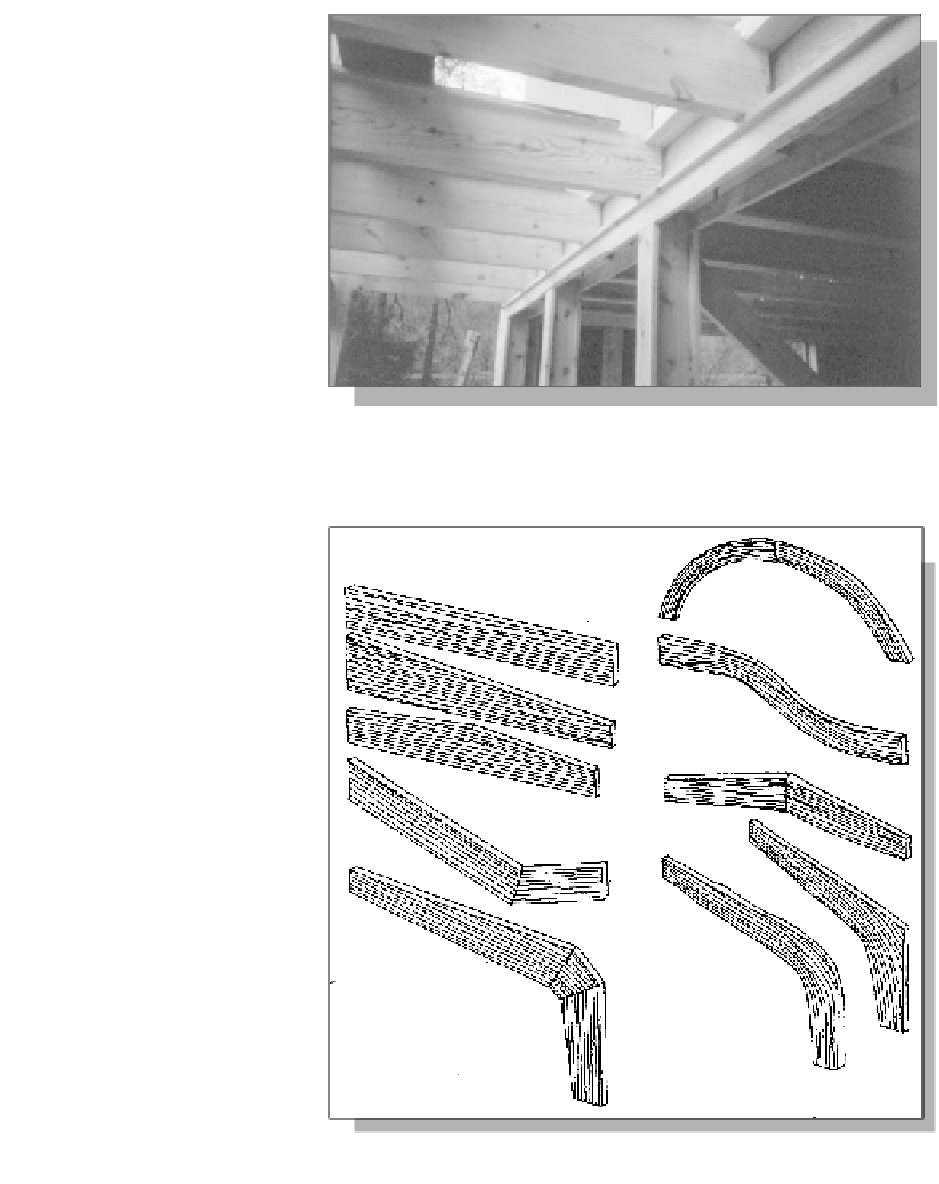Civil Engineering Reference
In-Depth Information
Foundations
The most important construc-
tion methods for foundations
are raft and pile foundations.
Their main areas of use are as
bases for foundation walls and
to stabilize weaker ground
conditions.
Timbers have varying prop-
erties in relation to damp.
Some timbers, such as maple
and ash, decompose very
quickly in both earth and
water; spruce is similar. Many
types of timber can survive
longer in damp or low-oxygen
environments than in normal
country conditions. Pine,
alder, elm and oak can last
over 500 years in this sort of
environment; larch can sur-
vive for 1500 years. As soon as
the relative moisture content
in timber drops below 30-35
per cent, rot sets in, and dura-
bility falls drastically. Certain
types of timber are better than
others even in these condi-
tions. Oak can survive
between 15 and 20 years,
while larch and resin-filled
pine can probably last seven to
10 years.
A key condition for a perma-
nent timber foundation is an
even, rich dampness. The tim-
ber should be completely con-
cealed in earth and lie below the
ground water level. Exposed
logs can be impregnated, even
though this is not particularly
good environmentally, as it
Figure 13.34: A structure designed for re-use. The structure is made of
prefabricated standard monomaterial components, timber and concrete,
which can easily be dismantled and re-used. Source: Gaia Lista, 1995
Figure 13.35: Structural possibilities for laminated timber.

